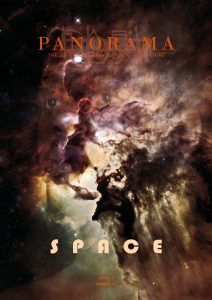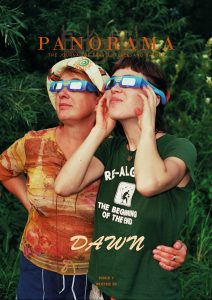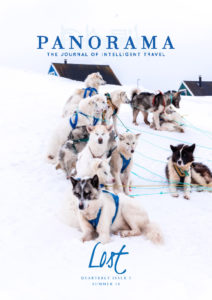Homestead Road was not entirely unfamiliar to me when I first moved to the neighbourhood where it begins, at the cusp of two Silicon Valley towns: Sunnyvale and Cupertino. The two-lane road snakes past a few older side streets, a shopping center and some apartment complexes, then straightens out as it approaches a middle school, and turns into a heavily trafficked four-lane road by the time it reaches our districted high school about two miles away.
Though I had never lived in the area before 2012, I had visited friends from time to time and learned the layout of the grid road system that connects the area’s towns commonly known as South Bay, about a 45-minute drive to San Francisco. My family researched the district and chose the neighbourhood because of the top-tier public schools, because of the Mediterranean microclimate and because it’s easy to walk to the produce market and coffee shop. On days Homestead Road is particularly congested during morning rush hour, it is convenient enough for my sixteen-year-old daughter to slip out of the car and walk the last few blocks to her high school – it’s considered safe. The high-tech bubble of Silicon Valley gives the veneer that this is a peaceful place.
Our family moved to California under extreme circumstances. My husband’s former employer in Georgia had used the state attorney general’s office to criminalize workplace politics and accused him of malfeasance. The state police had raided our home in suburban Atlanta at gunpoint a couple years before. They pointed assault rifles at us – the same kind used in school shootings. My husband was at work and I was on my driveway, returning from morning carpool and the grocery store. It took more than six years to clear his name and baseless, racially-motivated racketeering charges, but our family was forced to move two years after the nightmare began. We chose California, far away from the prejudice and the place where guns were drawn on us.
The flowers and trees on Homestead Road were not unfamiliar. I’d seen them in the South: roses and forget-me-nots, mums, marigolds, hibiscus and daylilies, magnolias and pines mixed in with the hardwoods and other flora that Northern California is known for, including succulents. Since California was experiencing a drought, every day was pretty much the same: the bright blue skies with fantastic clouds emerging by sunset, warm days that were uncomfortably so in the late summer months of July and August. I often walked past the well-kept yards and gardens, the mouths of side streets, on the bridge that spanned over State Road 85, and watched the cars whiz by on the expressway. I saw the same residents more or less each day, walking their dogs, strolling their babies, some parents walking with their children, some cyclists on Foothill Expressway that intersected Homestead Road, some older couples laden with grocery bags. People who looked like me, often speaking a language other than English. This was in stark contrast to my Atlanta suburb, where the neighbours were almost all white and unfriendly – and relied heavily on their cars, even to meet their children as they stepped off the public school bus in the afternoons inside the subdivision.
In 2012, the year we moved, I had one child who attended Homestead High School, and two who attended the elementary school a short distance from our home, in the opposite direction. The first semester was almost at its close when my oldest daughter texted me one morning – her school was on lockdown, what should she do? Could I come pick her up? About the same time I received a robocall saying a neighbouring high school had received a bomb threat and that all the proximate schools were also on lockdown. I was walking on Homestead near the coffee shop and I turned around and ran home, told her to stay put and follow her art teacher’s instructions. I jumped into my car and drove toward her school, but was stymied by the police on the road directing traffic away. I saw other parents, many cars, trying to get to their children. A short time later, the lockdown was lifted and the assessment was communicated via another automated telephone message. A student was later taken into police custody. I was frightened but I figured it was an anomaly. I convinced myself it was a fluke.
The next day, in Newtown, Connecticut, a man shot and killed 20 school children and six staff at Sandy Hook Elementary School.
It was the end of the academic semester for schools in South Bay, but principals in the area alerted families about gun violence protocol on campus and counselling services, and attempted to allay concerns that the children in their care during the school day were not safe. Over the winter break, we heard many news reports on the radio and watched confrontations on TV between members of the NRA and advocates for gun control. I signed petitions, shared information with my friends and acquaintances on social media, called my state representatives and asked for help. Nothing changed in Silicon Valley, or for that matter, the rest of the country.
Three weeks after the start of the spring semester, in January 2013, I was walking on Homestead Road towards my house with groceries in hand when everyone, including me, froze at the sight of so many emergency vehicles. Every sheriff’s deputy, every patrolman, every firefighter, every paramedic in the vicinity turned on their vehicles’ sirens and drove at breakneck speed down Homestead Road in the direction of Cupertino Middle School and Homestead High School, where my eldest daughter was a freshman. It was a beautiful, sunny day, but the eerie cacophony of sirens spooked me. I was transported back to that day in Georgia when the state police, armed and wearing bulletproof vests, swarmed my driveway. I was a statue, my hands cold, my feet rooted.
Within the next half-hour, a robocall stated a student at the middle school reported seeing a suspicious man with a weapon, and both middle and high schools were on lockdown. A few hours later, after an exhaustive search by law enforcement, helicopters flying overhead, traffic redirected off Homestead Road and onto the interstate, students hiding in closets and bathrooms, under desks and barricading the classroom doors, the threat was deemed not credible – the student who reported the suspicious man recanted.
In Silicon Valley, there was much outrage over the resources spent on this false claim. There was continued debate over the Second Amendment and gun control. My fear had only increased. Like many other parents, I increased my efforts with state lawmakers, and on social media. And still, nothing changed.
In the intervening years from 2013 until the Parkland, Florida school shooting in February 2018, it has been relatively quiet in our section of the South Bay schools. In April 2017, a domestic violence situation in a convenience store next to Homestead High School caused the school to go on lockdown when the suspect fled the store. I was driving on Homestead Road, far from my end of the roadway, when I received the call from the school. I pulled over at a gas station to text my middle daughter to see if she was okay. By this time my oldest child had matriculated to college, and my middle daughter, a child who had grown up with lockdown drills and code reds and contingency plans, was in high school. She replied that she was fine. And nothing had changed.
But with the Parkland shootings, when a former student at a public high school outside Miami used assault weapons to kill 17 classmates and staff and wound another 17 people, something changed. The students of that high school and schools all around the country felt they had waited long enough for the adults and lawmakers in their respective communities to protect them, to keep them safe. They decided to practice the First Amendment. They decided to be the change they sought.
A month after Parkland, a student walkout was organized: students across the country were encouraged to walk out of their classrooms for 17 minutes, one minute per student who died in Florida on February 14th. My middle daughter at Homestead High School, like many of her classmates, made a poster. It read, “18th century laws cannot regulate 21st century weapons.” She and about 500 of her classmates stood outside in the rain holding up signs and engaging motorists and pedestrians on Homestead Road who were honking and cheering. After the 17 minutes were up, half of the rain-soaked students continued to walk to the neighbouring high school and joined another group walking to Cupertino City Hall, signs in hand, chanting together.
After witnessing this gesture from students all over the country, including adolescents and young adults from Silicon Valley, hope sprouted inside me. I am proud to see this generation of young people, those who have grown up in the shadow of lockdowns and gun violence on school grounds, advocate for themselves. These youth are becoming aware of the power of their own voices. They are technology savvy and they are unafraid to challenge the status quo. The survivors of the Parkland shooting have sparked action throughout the United States and rekindled the call for gun control – and for action to make all our schools safe spaces for learning.











